Once you have fixed your tiles they will need grouting, this involves mixing a powdered grout with a liquid (normally water) and pushing it into all of the gaps between the tiles using a rubber bladed squeegee. Avoid ready mixed grouts as they are often too runny and are difficult to use.

When grouting tiles a large rubber squeege makes the job much faster
If you are grouting in a shower or near anywhere that is likely to get wet you must use a waterproof grout. You can also get a special additive that you can add to grout to prevent it from going discoloured, this must be used when the tiles are used as a splash back over a cooking appliance. Coloured grouts are also available. If you are grouting any tiles that are porous such as Natural stone you must ensure that the grout will not stain the tiles, often a grout that is the same colour as the tiles will be used to prevent staining.
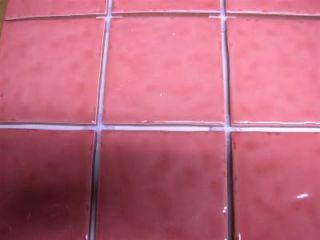
These tiles have been fixed and the adhesive has fully set.
Never grout tiles until you are sure that the adhesive has set fully or else the adhesive will not set properly.
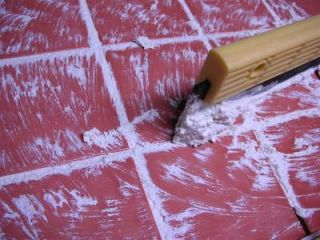
Mix the Grout to the manufacturers recommendations and then spread it over the tiles using the rubber squeegee.
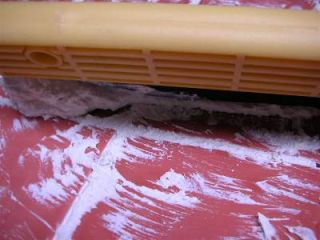
Ensure that the grout is pushed into all of the gaps.
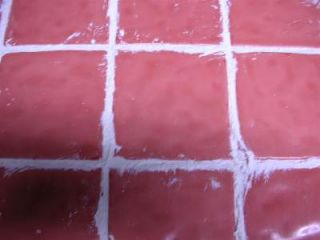
Remove any excess grout form the surface of the tiles with the squeegee as you go along.
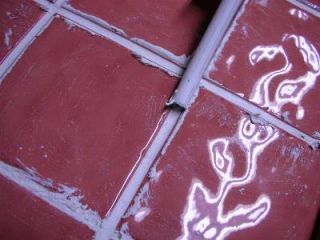
Allow the grout to stiffen slightly ( a few minutes ) and then finish off the grout lines by drawing a round object along the grout lines. Here I have used a piece of speedfit plastic pipe but you can use a piece of wooden dowel if you wish.
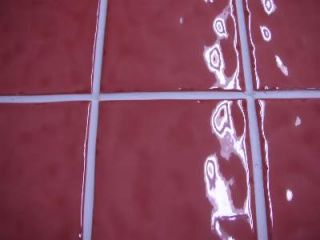
Allow the grout to dry and then clean the tiles using a damp cloth.



